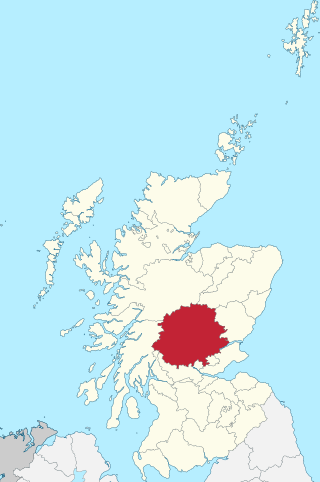
Perthshire, officially the County of Perth, is a historic county and registration county in central Scotland. Geographically it extends from Strathmore in the east, to the Pass of Drumochter in the north, Rannoch Moor and Ben Lui in the west, and Aberfoyle in the south; it borders the counties of Inverness-shire and Aberdeenshire to the north, Angus to the east, Fife, Kinross-shire, Clackmannanshire, Stirlingshire and Dunbartonshire to the south and Argyllshire to the west. It was a local government county from 1890 to 1930.
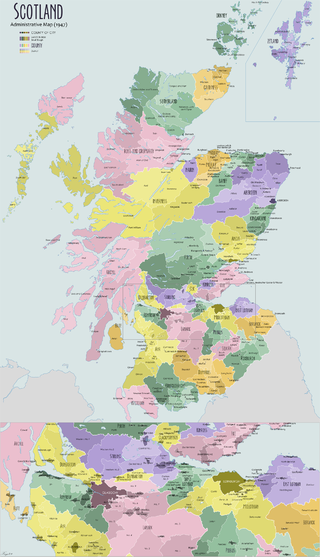
The shires of Scotland, or counties of Scotland, are historic subdivisions of Scotland established in the Middle Ages and used as administrative divisions until 1975. Originally established for judicial purposes, from the 17th century they started to be used for local administration purposes as well. The areas used for judicial functions (sheriffdoms) came to diverge from the shires, which ceased to be used for local government purposes after 1975 under the Local Government (Scotland) Act 1973.

The Local Government etc. (Scotland) Act 1994 is an Act of the Parliament of the United Kingdom that created the current local government structure of 32 unitary authorities covering the whole of Scotland.
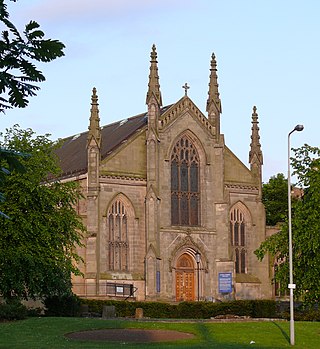
The Archdiocese of Saint Andrews & Edinburgh is an archdiocese of the Latin Church of the Catholic Church in Scotland. It is the metropolitan see of the province of Saint Andrews and Edinburgh, consisting of the additional suffragan sees of Aberdeen, Argyll and the Isles, Dunkeld, and Galloway. The archdiocese is led by Archbishop Leo Cushley, and its cathedral is St Mary's Cathedral, Edinburgh.

A mercat cross is the Scots name for the market cross found frequently in Scottish cities, towns and villages where historically the right to hold a regular market or fair was granted by the monarch, a bishop or a baron. It therefore served a secular purpose as a symbol of authority, and was an indication of a burgh's relative prosperity. Historically, the term dates from the period before 1707, when the Kingdom of Scotland was an independent state, but it has been applied loosely to later structures built in the traditional architectural style of crosses or structures fulfilling the function of marking a settlement's focal point. Historical documents often refer simply to "the cross" of whichever town or village is mentioned. Today, there are around 126 known examples of extant crosses in Scotland, though the number rises if later imitations are added.

The Diocese of Dunkeld was one of the 13 historical dioceses of Scotland preceding the abolition of Episcopacy in 1689.
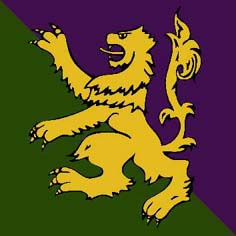
HQ 51st Infantry Brigade and Headquarters Scotland is a Regional Point of Command, Brigade of the British Army.

The Presbytery of Aberdeen and Shetland is one of the forty-two presbyteries of the Church of Scotland, being the local presbytery for the city of Aberdeen. The current moderator is the Rev Hutton Steel who is minister of High Hilton Parish Church. The presbytery represents and supervises thirty six Church of Scotland congregations within the city. The office is at Mastrick Parish Church.

Hew Scott (1791–1872) was a minister of the Church of Scotland parish of Anstruther Wester. He is largely remembered as a religious researcher and author. His "magnum opus" is the comprehensive, multi-volume work, Fasti Ecclesiae Scoticanae: The succession of ministers in the parish churches of Scotland, from the reformation, A.D. 1560, to the present time. This is a detailed, biographical record of each of the ministers of each of the parishes of the Church of Scotland from 1560 to 1870.. It was first published between 1866 and 1871 but it is regularly updated by the Church of Scotland.

The Diocese of Dunkeld is a diocese of the Latin Church of the Catholic Church in southern Scotland. On 28 December 2022, the Diocese became sede vacante following the resignation of Bishop Stephen Robson due to ill health.
Scouting in Scotland is largely represented by Scouts Scotland, a registered Scottish Charity No. SC017511 that is affiliated to the Scout Association of the United Kingdom. The Baden-Powell Scouts' Association also has a presence in Scotland.
Fasti Ecclesiae Scoticanae, The Succession of Ministers in the Church of Scotland from the Reformation is a title given to books containing lists of ministers from the Church of Scotland. The original volumes covered all ministers of the Established Church of Scotland. Volumes I-VII were published on a regional basis, later volumes cover the whole of the Church of Scotland:
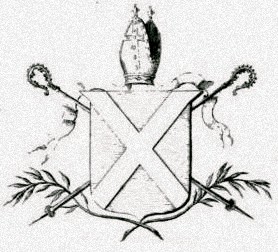
The Archdiocese of St Andrews was a territorial episcopal jurisdiction of the Catholic Church in early modern and medieval Scotland. It was the largest, most populous and wealthiest diocese of the medieval Scottish Catholic church, with territory in eastern Scotland stretching from Berwickshire and the Anglo-Scottish border to Aberdeenshire.
This is a list of listed buildings in Scotland. The list is split out by council area.
William Row (1563–1634) was a Scottish presbyterian divine.